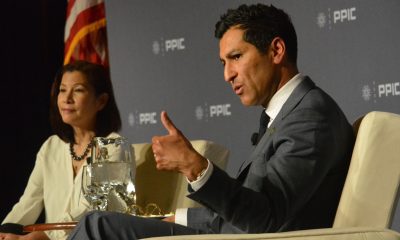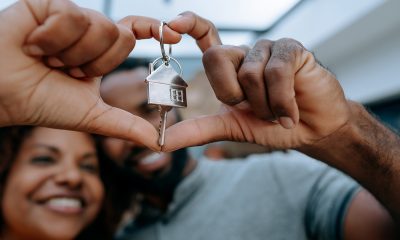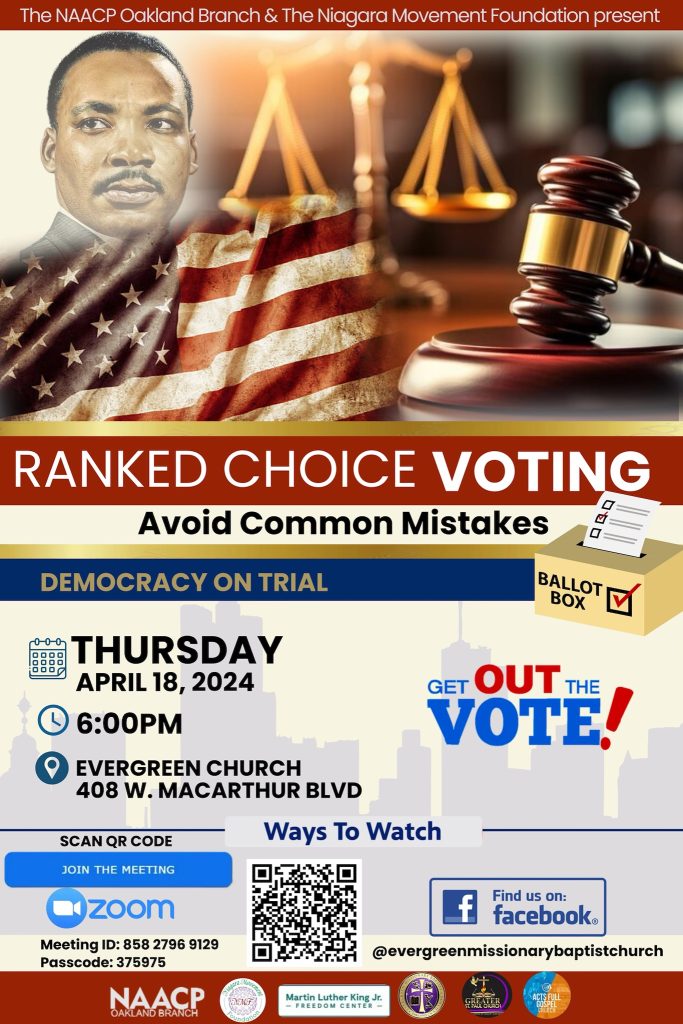#NNPA BlackPress
The Afro represents cultural change within Black Diaspora
NNPA NEWSWIRE — “There was some early blow-back resulting from the Afro. Beside the fact that many Black parents then frowned on the new expression of Black pride—and often prohibiting younger children from donning this haircut—White society was uncertain what to make of this outward and unapologetic show of African American pride and independence.”
A once ‘defiant’ hairstyle remains mired on controversy
By Merdies Hayes, Editor, Our Weekly News
“How ya doin’? Good to see ya. Have a seat.”
O.D. Threatt makes way for the barber chair. You feel at home as he affixes the bib over your chest. He takes your glasses. He asks the usual question: “Cut it short?” He hasn’t needed to boost the chair upward for at least 50 years.
Between the chit-chat about the Dodgers or Lakers—there’s very little political talk—the subject of the Afro (or “natural”) comes up, of which he is a font of knowledge. O.D., by his estimate, has probably given 50,000 haircuts over the past 60 years. Of those, there’s a good chance that half have been Afros since his days at the legendary Upright Barber Shop at 58th Street and Central Avenue in South Los Angeles. Back then, in the late 1960s, it was the place to go to wear that distinctive style that marked a new era of Black social consciousness.
Wanting to make a statement
“I was thinking about that just the other day,” he said. “You know, before the natural, Black teenagers generally kept their hair relatively short. Much more conservative, often with a “Kennedy part” on the left side. That all changed with the natural. The kids wanted to make a statement. They wanted a separate identity from White America.”
There was some early blow-back resulting from the Afro. Beside the fact that many Black parents then frowned on the new expression of Black pride—and often prohibiting younger children from donning this haircut—White society was uncertain what to make of this outward and unapologetic show of African American pride and independence.
“No, a good many parents would not let their little kids have a natural,” O.D. explained. “That was a little too daring—a little too ‘militant’—for the generation who moved from the South after World War II. It was different for the teenagers. They saw people like James Brown, Angela Davis or the Black Panthers wearing a natural, and this expression was part of new generation of kids who were exposed more to their history going back to slavery and further back to Africa.”
Turning tables on ‘nappy,’ ‘woolly’ hair
In the 1960s, Black people said, essentially, “to hell with that” and turned the tables on the familiar and unflattering tropes of “nappy,” “woolly” and “unruly” hair in liberating themselves from any and everything originally associated with White “acceptance.” After generations of subjecting themselves to European beauty standards, African Americans decided to take back their hair. This newfound acceptance was widely known as the “Black Is Beautiful” movement, which sprang from the Black Power movement.
With political activists such as Davis, Huey P. Newton and Jesse Jackson proudly rocking Afros while fighting oppression, the hairstyle quickly emerged as a symbol of Black beauty, liberation and pride.
Black activists were agitated by White supremacy and Jim Crow laws. As well, they wanted to show an outward sign of their frustration toward Dr. Martin Luther’s King Jr.’s philosophy of nonviolence. The Afro would become Black beauty personified—and done without White validation. The Afro did not care about critics. It did not care about
disapproving looks. For many Black men, it was about “cool pose” and, to a degree, about hyper-masculinity in the face of police brutality and constant oppression.
What may be most interesting about the Afro is its cultural trajectory. In the 1970s, for instance, the Afro was perceived as a major political statement that, beforehand, would have never appeared in the pages of a mainstream publication, or graced the motion picture or television screens. The Afro originated in both a political and emotional climate. The style would fit with a broader generational rejection of artifice but, more importantly, it expressed defiance of racist beauty norms, rejection of middle-class conventions (much like the hippie movement of the mid-60s) and demonstrated pride in Black beauty. The unstraightened hair of the Afro was simultaneously a way to celebrate the cultural and physical distinctiveness of the Black race, and to fully reject practices associated with any emulation of Whites.
An ‘in-your-face’ style for Black youth
“You didn’t see Black celebrities or athletes wearing the natural. Willie Mays didn’t have one. Neither did Jim Brown or Muhammad Ali in their early days,” O.D. said. He explained that the Martin Luther King generation would have said the Afro was a little too “in-your-face” and that it would do more to instigate White America rather than attracting them to the subject of Black equality.
“The young people saw it differently,” O.D. noted. “This was their time to speak. It was their time of self-expression. The Black teenagers wore the Afro with pride and distinction because it was theirs…and no White person could take it away from them.”
Black hair has been an integral feature of Black history, from African tribal styles to Caribbean dreadlocks. In early African civilizations, for instance, hairstyles could indicate a person’s family background, tribe and social status. As an example, when men from the Wolof tribe (in modern Senegal and Gambia) went to war, they wore a braided style, while women in mourning—in other words a widow—would either not “do” her hair or adopt a subdued style.
During the slave trade, these captives took many of their African customs with them to the New World, including their specially-designed combs—not terribly different from the ever-present Afro combs of the 1970s. During the 19th Century, when slavery was abolished throughout much of the world, many Black people felt pressure to “fit in” with mainstream White society and adjusted their hair accordingly.
Emancipation the ‘great oppressor’?
“Black people felt compelled to smooth their hair and [texture it] to fit in easier, and to move in society better (and in camouflage) almost,” said Aaryn Lynch who produced a London exhibition on the history of the Afro comb. “I’ve nicknamed the post-emancipation era ‘the great oppression’ because that’s when Black people had to go through really intensive methods to smooth their hair. Men and women would put their hair in a hot chemical mixture—that would almost burn their scalp—to make it look more European and silky.”
In the 1930s, Rastafari theology developed in Jamaica from the ideas of Marcus Garvey, the legendary political activist who worked to improve the status of Black people. Believers then and today are forbidden to cut their hair and instead twist it into dreadlocks.
While it is not clear when and where the style originated, there are references in the Old Testament. The Hindu deity Shiva is sometimes depicted wearing dreadlocks. Along with the Afro, dreadlocks remain the most distinctive Black hairstyle.
A tumultuous timeline
Black hair—specifically the Afro—can trace a centuries-old timeline:
- 1444: Europeans trading along the West African coast observe people wearing elaborate hairstyles, including Afros, locks, plaits and twists
- 1619: The first slaves are brought to Jamestown, VA, many of which have an Afro and/or plaits and twists
- 1700s: Calling Black hair “wool,” many Whites dehumanized slaves. The more elaborate African hairstyles could not be retained
- 1800s: Without the traditional combs and herbal treatments, slaves rely on bacon grease, butter and kerosene as hair conditioners and cleaners. Lighter-skinned, straight-haired Blacks would command a higher price than the more “kinky-haired” slaves
- 1865: Slavery ends, but Whites look upon Black women who adopt a Western coiffure as “well-adjusted” meaning that “good’ hair is a specific White attribute
- 1880: Metal hot combs, invented by the French in 1845, are used by Blacks to temporarily straighten kinky hair
- 1900s: Madame C.J. Walker develops a range of hair-care products for Black hair
- 1954: George E. Johnson launches the Johnson Products Co. with Ultra Wave Hair Culture to be used as a “permanent” hair straightener for both Black men and women
- 1963: Actress Cicely Tyson wears cornrows on the television drama “East Side/West Side”
- 1970: Angela Davis becomes an icon of the Black Power movement with her large Afro
- 1971: Melba Tolliver is fired from the ABC News affiliate in New York for wearing an Afro while covering the marriage of Tricia Nixon
- 1988: Director Spike Lee exposes the schism between “good-hair/bad-hair” among African Americans in the film “School Daze”
- 2006: Black hair care becomes a billion-dollar industry
- 2009: The movie “Good Hair” grosses $4 million
Celebrating Black beauty
At the peak of its popularity in the late 1960s and early 1970s, the Afro epitomized the “Black is Beautiful” movement. In those years, the style represented a celebration of Black beauty and repudiation of Eurocentric beauty standards. The Afro also created a sense of commonality among African Americans who saw the style as a mark of a
person who was willing to take a different stand against racial injustice.
Even today, the natural state of Black hair causes debate in the workforce. Because certain African hairstyles may leave White employers baffled and confused, many workplaces still do not tolerate locks or natural hair and require that Black men and women adhere to a style more suited with White fashion norms.
This debate has led to an historic bill introduced by California State Sen. Holly J. Mitchell (30th District) making California the first state in the country to ban racial discrimination based on natural hair. Known as the CROWN (“Creating a Respectful and Open Workplace for Natural Hair”), the bill was signed in early July by Gov. Gavin Newsom to amend the Fair Employment and Housing Act and the state Education Code to prohibit employers and schools from enforcing purportedly “race neutral” grooming policies that disproportionately impact people of color.
Sen. Holly J. Mitchell’s CROWN Act
“This law protects the right of Black Californians to choose to wear their hair in its natural form, without pressure to conform to Eurocentric norms,” Mitchell said. “I am so excited to see the culture change that will ensue from the law.” Similar legislation has been proposed in New York and in New Jersey, with New York in February banning any form of hair discrimination at school and in the workplace.
History, to an extent, is defined by a simple haircut not simply for one person, but for a generation who came of age during the Black Power Movement.
You see yourself in the hand mirror, just to check if your look remains normal for the times. Everything checks out.
“Everything okay?” O.D. asks. “Looks good O.D. Each time I stop in you seem to trim more gray hair.” “That’s father time for ya,” he replied.
And with that, the bib is removed, and any remaining hair is neatly brushed away until next time.
“Thanks O.D.” “Thank you,” he responds. “See ya next time.”
#NNPA BlackPress
Beloved Actor and Activist Louis Cameron Gossett Jr. Dies at 87
NNPA NEWSWIRE — Louis Gossett Jr., the groundbreaking actor whose career spanned over five decades and who became the first Black actor to win an Academy Award as Best Supporting Actor for his memorable role in “An Officer and a Gentleman,” has died. Gossett, who was born on May 27, 1936, in Brooklyn, N.Y., was 87. Recognized early on for his resilience and nearly unmatched determination, Gossett arrived in Los Angeles in 1967 after a stint on Broadway.
The post Beloved Actor and Activist Louis Cameron Gossett Jr. Dies at 87 first appeared on BlackPressUSA.

By Stacy M. Brown
NNPA Newswire Senior National Correspondent
@StacyBrownMedia
Louis Gossett Jr., the groundbreaking actor whose career spanned over five decades and who became the first Black actor to win an Academy Award as Best Supporting Actor for his memorable role in “An Officer and a Gentleman,” has died. Gossett, who was born on May 27, 1936, in Brooklyn, N.Y., was 87. Recognized early on for his resilience and nearly unmatched determination, Gossett arrived in Los Angeles in 1967 after a stint on Broadway.
He sometimes spoke of being pulled over by law enforcement en route to Beverly Hills, once being handcuffed to a tree, which he remembered as a jarring introduction to the racial tensions of Hollywood. In his memoir “An Actor and a Gentleman,” Gossett recounted the ordeal, noting the challenges faced by Black artists in the industry. Despite the hurdles, Gossett’s talent shone brightly, earning him acclaim in groundbreaking productions such as “A Raisin in the Sun” alongside Sidney Poitier. His Emmy-winning portrayal of Fiddler in “Roots” solidified his status as a trailblazer, navigating a landscape fraught with racial prejudice.
According to the HistoryMakers, which interviewed him in 2005, Gossett’s journey into the limelight began during his formative years at PS 135 and Mark Twain Junior High School, where he demonstrated early leadership as the student body president. His passion for the arts blossomed when he starred in a “You Can’t Take It With You” production at Abraham Lincoln High School, catching the attention of talent scouts who propelled him onto Broadway’s stage in “Take A Giant Step.” His stellar performance earned him the prestigious Donaldson Award for Best Newcomer to Theatre in 1952. Though initially drawn to sports, Gossett’s towering 6’4” frame and athletic prowess led him to receive a basketball scholarship at New York University. Despite being drafted by the New York Knicks in 1958, Gossett pursued his love for acting, honing his craft at The Actors Studio under the tutelage of luminaries like John Sticks and Peggy Fury.
In 1961, Gossett’s talent caught the eye of Broadway directors, leading to roles in acclaimed productions such as “Raisin in the Sun” and “The Blacks,” alongside legends like James Earl Jones, Cicely Tyson, Roscoe Lee Brown, and Maya Angelou. Transitioning seamlessly to television, Gossett graced small screens with appearances in notable shows like “The Bush Baby” and “Companions in Nightmare.” Gossett’s silver screen breakthrough came with his role in “The Landlord,” paving the way for a prolific filmography that spanned over 50 movies and hundreds of television shows. From “Skin Game” to “Lackawanna Blues,” Gossett captivated audiences with his commanding presence and versatile performances.
However, his portrayal of “Fiddler” in Alex Haley’s groundbreaking miniseries “Roots” earned Gossett critical acclaim, including an Emmy Award. The HistoryMakers noted that his golden touch extended to the big screen, where his role as Sergeant Emil Foley in “An Officer and a Gentleman” earned him an Academy Award for Best Supporting Actor, making him a trailblazer in Hollywood history.
Beyond the glitz and glamour of Hollywood, Gossett was deeply committed to community activism. In 1964, he co-founded a theater group for troubled youth alongside James Earl Jones and Paul Sorvino, setting the stage for his lifelong dedication to mentoring and inspiring the next generation. Gossett’s tireless advocacy for racial equality culminated in the establishment of Eracism, a nonprofit organization dedicated to combating racism both domestically and abroad. Throughout his illustrious career, Gossett remained a beacon of strength and resilience, using his platform to uplift marginalized voices and champion social change. Gossett is survived by his children, Satie and Sharron.
The post Beloved Actor and Activist Louis Cameron Gossett Jr. Dies at 87 first appeared on BlackPressUSA.
#NNPA BlackPress
COMMENTARY: D.C. Crime Bill Fails to Address Root Causes of Violence and Incarceration
WASHINGTON INFORMER — The D.C. crime bill and so many others like it are reminiscent of the ‘94 crime bill, which produced new and harsher criminal sentences, helped deploy thousands of police and surveilling methods in Black and brown communities, and incentivized more states to build prisons through a massive infusion of federal funding. While it is not at the root of mass incarceration, it significantly accelerated it, forcing a generation of Black and brown families into a never-ending cycle of state-sanctioned violence and incarceration.
The post COMMENTARY: D.C. Crime Bill Fails to Address Root Causes of Violence and Incarceration first appeared on BlackPressUSA.

By Kaili Moss and Jillian Burford | Washington Informer
Mayor Bowser has signed the “Secure DC” omnibus bill passed by the D.C. Council last month. But we already know that this bill will be disastrous for all of D.C., especially for Black and brown residents.
While proponents claim that this legislation “will make D.C. residents safer and more secure,” it actually does nothing to address the root of the harm in the first place and instead maintains a cycle of violence, poverty, and broken community ties. The omnibus bill calls for increased surveillance, drug-free zones, and will expand pre-trial detention that will incarcerate people at a significantly higher rate and for an indeterminate amount of time before they are even tried. This bill will roll back decades of nationwide policy reform efforts and initiatives to keep our communities safe and whole, which is completely contradictory to what the “Secure” D.C. bill claims it will do.
What is unfolding in Washington, D.C., is part of a dangerous national trend. We have seen a resurrection of bad crime bills in several jurisdictions across the country — a phenomenon policy experts have named “zombie laws,” which are ineffective, costly, dangerous for communities of color and, most importantly, will not create public safety. Throwing more money into policing while failing to fund preventative measures does not keep us safe.
The D.C. crime bill and so many others like it are reminiscent of the ‘94 crime bill, which produced new and harsher criminal sentences, helped deploy thousands of police and surveilling methods in Black and brown communities, and incentivized more states to build prisons through a massive infusion of federal funding. While it is not at the root of mass incarceration, it significantly accelerated it, forcing a generation of Black and brown families into a never-ending cycle of state-sanctioned violence and incarceration. Thirty years later, despite spending billions each year to enforce these policies with many of these provisions remaining in effect, it has done very little to create long-term preventative solutions. Instead, it placed a permanent moving target on the backs of Black people, and the D.C. crime bill will do the same.
The bill calls for more pretrial detention. When our loved ones are held on pretrial detention, they are held on the presumption of guilt for an indeterminate amount of time before ever seeing a judge, which can destabilize people and their families. According to experts at the Malcolm Weimer Center for Social Policy at Harvard University, just one day in jail can have “devastating consequences.” On any given day, approximately 750,000 people are held in jails across the nation — a number that beats our nation’s capital population by about 100,000. Once detained, people run the risk of losing wages, jobs, housing, mental and health treatments, and time with their families. Studies show that pretrial detention of even a couple of days makes it more likely for that person to be rearrested.
The bill also endangers people by continuing a misguided and dangerous War on Drugs, which will not get drugs off the street, nor will it deter drug use and subsequent substance use disorders (SUDs). Drug policies are a matter of public health and should be treated as such. Many states such as Alabama, Iowa and Wisconsin are treating the current fentanyl crisis as “Crack 2.0,” reintroducing a litany of failed policies that have sent millions to jails and prisons instead of prioritizing harm reduction. Instead, we propose a simple solution: listen to members of the affected communities. Through the Decrim Poverty D.C. Coalition, community members, policy experts and other stakeholders formed a campaign to decriminalize drugs and propose comprehensive legislation to do so.
While there are many concerning provisions within the omnibus bill, car chases pose a direct physical threat to our community members. In July 2023, NBC4 reported that the D.C. Council approved emergency legislation that gave MPD officers the ability to engage in vehicular pursuits with so-called “limited circumstances.” Sgt. Val Barnes, the head of MPD’s carjacking task force, even expressed concern months before the decision, saying, “The department has a pretty strict no-chase policy, and obviously for an urban setting and a major metropolitan city, that’s understandable.” If our law enforcement officers themselves are operating with more concern than our elected officials, what does it say about the omnibus bill’s purported intention to keep us safe?
And what does it mean when the risk of bodily harm is posed by the pursuit itself? On Saturday, Feb. 10, an Eckington resident had a near-miss as a stolen car barreled towards her and her dog on the sidewalk with an MPD officer in pursuit. What responsibility does the city hold if this bystander was hit? What does restitution look like? Why are our elected officials pushing for MPD officers to contradict their own policies?
Just a few summers ago during the uprisings of 2020, we saw a shift in public perspectives on policing and led to legislation aimed at limiting police power after the highly-publicized murders of loved ones Breonna Taylor and George Floyd — both victims of War on Drugs policing and the powers gained from the ’94 crime bill. And yet here we are. These measures do not keep us safe and further endanger the health of our communities. Studies show that communities that focus on harm reduction and improving material conditions have a greater impact on public safety and community health. What’s missing in mainstream conversations about violent crime is the violence that stems from state institutions and structures that perpetuate racial and class inequality. The people of D.C. deserve to feel safe, and that includes feeling safe from the harms enacted by the police.
Kaili Moss is a staff attorney at Advancement Project, a national racial justice and legal organization, and Jillian Burford is a policy organizer at Harriet’s Wildest Dreams.
The post COMMENTARY: D.C. Crime Bill Fails to Address Root Causes of Violence and Incarceration first appeared on BlackPressUSA.
#NNPA BlackPress
Mayor, City Council President React to May 31 Closing of Birmingham-Southern College
THE BIRMINGHAM TIMES — “This is a tragic day for the college, our students, our employees, and our alumni, and an outcome so many have worked tirelessly to prevent,” Rev. Keith Thompson, chairman of the BSC Board of Trustees said in an announcement to alumni. “We understand the devastating impact this has on each of you, and we will now direct our efforts toward ensuring the smoothest possible transition for everyone involved.”
The post Mayor, City Council President React to May 31 Closing of Birmingham-Southern College first appeared on BlackPressUSA.

By Barnett Wright | The Birmingham Times
Birmingham-Southern College will close on May 31, after more than a century as one of the city’s most respected institutions.
“This is a tragic day for the college, our students, our employees, and our alumni, and an outcome so many have worked tirelessly to prevent,” Rev. Keith Thompson, chairman of the BSC Board of Trustees said in an announcement to alumni. “We understand the devastating impact this has on each of you, and we will now direct our efforts toward ensuring the smoothest possible transition for everyone involved.”
There are approximately 700 students enrolled at BSC this semester.
“Word of the decision to close Birmingham Southern College is disappointing and heartbreaking to all of us who recognize it as a stalwart of our community,” Birmingham Mayor Randall Woodfin said in a statement. “I’ve stood alongside members of our City Council to protect this institution and its proud legacy of shaping leaders. It’s frustrating that those values were not shared by lawmakers in Montgomery.”
Birmingham City Council President Darrell O’Quinn said news of the closing was “devastating” on multiple levels.
“This is devastating for the students, faculty members, families and everyone affiliated with this historic institution of higher learning,” he said. “It’s also profoundly distressing for the surrounding community, who will now be living in close proximity to an empty college campus. As we’ve seen with other institutions that have shuttered their doors, we will be entering a difficult chapter following this unfortunate development … We’re approaching this with resilience and a sense of hope that something positive can eventually come from this troubling chapter.”
The school first started as the merger of Southern University and Birmingham College in 1918.
The announcement comes over a year after BSC officials admitted the institution was $38 million in debt. Looking to the Alabama Legislature for help, BSC did not receive any assistance.
This past legislative session, Sen. Jabo Waggoner sponsored a bill to extend a loan to BSC. However, the bill subsequently died on the floor.
Notable BSC alumni include former New York Times editor-in-chief Howell Raines, former U.S. Sen. Howell Heflin and former Alabama Supreme Court Chief Justice Perry O. Hooper Sr.
This story will be updated.
The post Mayor, City Council President React to May 31 Closing of Birmingham-Southern College first appeared on BlackPressUSA.
-

 Activism4 weeks ago
Activism4 weeks agoOakland Post: Week of March 20 – 26, 2024
-

 #NNPA BlackPress3 weeks ago
#NNPA BlackPress3 weeks agoMayor, City Council President React to May 31 Closing of Birmingham-Southern College
-

 #NNPA BlackPress3 weeks ago
#NNPA BlackPress3 weeks agoCOMMENTARY: D.C. Crime Bill Fails to Address Root Causes of Violence and Incarceration
-

 #NNPA BlackPress3 weeks ago
#NNPA BlackPress3 weeks agoFrom Raids to Revelations: The Dark Turn in Sean ‘Diddy’ Combs’ Saga
-

 #NNPA BlackPress3 weeks ago
#NNPA BlackPress3 weeks agoCOMMENTARY: Lady Day and The Lights!
-

 #NNPA BlackPress3 weeks ago
#NNPA BlackPress3 weeks agoBaltimore Key Bridge Catastrophe: A City’s Heartbreak and a Nation’s Alarm
-

 #NNPA BlackPress3 weeks ago
#NNPA BlackPress3 weeks agoBaltimore’s Key Bridge Struck by Ship, Collapses into Water
-

 Activism3 weeks ago
Activism3 weeks agoOakland Post: Week of March 27 – April 2, 2024













































